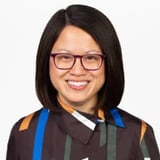Summary
The speaker shares his journey from a computer science background to becoming a cognitive science PhD and UX expert working at notable companies like Yahoo, eBay, Realtor, and Intel Security. He uses this experience to frame how to gather user insights, particularly in enterprise UX where users range from end users to administrators and buyers with differing needs. He introduces a layered model of user experience focusing on core user needs, usability, and appeal. Then, he presents a 3D research methods framework spanning qualitative to quantitative, behavioral to attitudinal data, and context of use from natural to scripted. Usability studies, ethnographic fieldwork, surveys, big data, and concept testing each fit differently on this landscape and serve particular phases of product development: strategize (focus on user needs with field studies and interviews), optimize (diagnosing usability issues), and assess (measuring success quantitatively). Challenges in enterprise UX include multiple user personas, conflicting priorities, and access constraints. The speaker highlights pitfalls such as relying on anecdotal data or conflating buyer insights with user needs. Finally, he recommends a balanced approach combining quantitative behavioral and attitudinal methods with qualitative field studies to form a "golden trapezoid" of user research for better decision making.
Key Insights
-
•
Enterprise UX must consider distinct roles: end users, administrators, and buyers, each with unique needs.
-
•
A layered user experience model centers on core user needs, surrounded by usability and then content/look and feel.
-
•
Qualitative research is direct and rich in context, enabling discovery of unexpected insights.
-
•
Quantitative research is mostly indirect and excels at measuring how much or how many, providing certainty.
-
•
Behavioral data shows what users do, attitudinal data reflects what users say, and both must be considered.
-
•
Context of use matters: natural, scripted, decontextualized, and hybrid methods reveal different facets of user experience.
-
•
Ethnographic field studies are the most powerful qualitative method for understanding real-world user behavior.
-
•
Enterprise UX faces access issues, competing priorities, and internal politics that impact research and product decisions.
-
•
Product development stages map to research needs: strategize phase focuses on user needs, optimize on usability, assess on outcomes.
-
•
Combining quantitative behavioral/attitudinal methods with qualitative field studies forms a balanced, effective insight generation approach.
Notable Quotes
"Every great user experience begins with meeting a user need at its very core."
"Security and great user experience is almost a null set — we need to enlarge that circle."
"What people say and what people do are not the same thing, not because they lie but often because they aren’t aware."
"In enterprise, people often just want to not get fired — that’s a very important need."
"Having no competition can be a problem because there’s no pressure to create a great user experience."
"Field studies are the most powerful qualitative method available — nothing else compares for real-world insight."
"Most executives think user research is big numbers good, small numbers bad, or focus groups with M&Ms."
"What we often see in enterprises is anecdotal or self-reported data that doesn’t reflect the true user ecosystem."
"Usability labs are qualitative and mostly behavioral, and they help diagnose why something isn’t working."
"The golden trapezoid of user research combines quantitative behavioral and attitudinal data with field studies for best insights."
Or choose a question:
















More Videos

"Our research practice was perceived largely as design testers, empathy vehicles, and policing functions — a narrow, reactive role."
Nalini KotamrajuResearch After UX
March 25, 2024

"Not belonging anywhere meant that I had access everywhere."
Dean BroadleyNot Black Enough to be White
January 8, 2024

"Silence is complicity. Inaction is support."
Denise Jacobs Nancy Douyon Renee Reid Lisa WelchmanInteractive Keynote: Social Change by Design
January 8, 2024

"Our first problem statement was too big, so we refined it to something more doable and actionable."
Kim Fellman CohenMeasuring the Designer Experience
October 23, 2019

"We mostly have something called a BYOE scenario or bring your own ethics."
George AyeThat Quiet Little Voice: When Design and Ethics Collide
November 16, 2022

"Don’t just think about design systems as an artifact but as a living ecosystem connecting people, tools, and products."
Nathan CurtisBeyond the Toolkit: Spreading a System Across People & Products
June 9, 2016

"Real estate transactions are among the top five life events in terms of emotional significance for people."
Greg PetroffThe Compass Mission
March 10, 2021

"Diverse research teams blend outsider and insider perspectives for authentic cultural translation."
Chloe Amos-EdkinsA Cultural Approach: Research in the Context of Glocalisation
March 27, 2023

"Agile can feel like a cult, but the data helps show it’s working and not just a belief system."
Mackenzie Cockram Sara Branco Cunha Ian FranklinIntegrating Qualitative and Quantitative Research from Discovery to Live
December 16, 2022
















